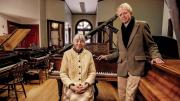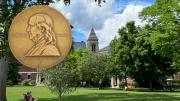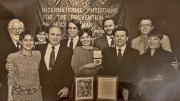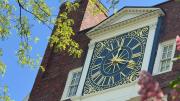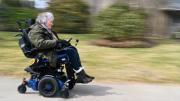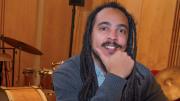It’s one thing to know that classical piano pieces—Chopin’s nocturnes, Tchaikovsky’s concertos, Beethoven’s “Moonlight” sonata—sound different on a modern instrument than they would have on the pianos their composers knew and played (and, importantly, wrote for) in their lifetimes. It’s an entirely different thing to actually hear it.
“Many pianists who come here find the experience life-changing,” says Patricia Frederick, opening the door to the Frederick Historical Piano Collection, the nonprofit organization she and her husband, Edmund Michael Frederick ’66, G.S.A. ’72, have operated together for 48 years. Inside a former town library in tiny Ashburnham, Massachusetts, every room is filled with grand pianos, more than two dozen altogether, spanning centuries and generations. They bear the names of legendary makers: Graf, Bösendorfer, Streicher, Pleyel, Blüthner. The youngest instrument in the collection is a 1928 Erard made in Paris. The oldest is an unsigned Viennese-style piano from the 1790s, built into an older, reused harpsichord case, with knee levers for the dampers and a reverse-color keyboard (black for the natural tones, white for sharps and flats). It would have been state of the art at the end of Mozart’s lifetime.
What makes the Frederick collection so revelatory isn’t the instruments’ history and lineage but the fact that each of them can still be played. A restorer and serious amateur musician, Michael Frederick (who goes by his middle name) has spent a lifetime rejuvenating old and often neglected pianos, returning them to active concert condition. Indeed, since 1985, the couple have hosted an annual series at the Community Church two blocks away, in which pianists from around the world perform, often to sold-out audiences, using instruments from the collection.
The Fredericks give tours—immersive, hours-long affairs that wind backward in time from the twentieth century to the eighteenth and cover everything from regional variations in piano structure to composers’ musical eccentricities to the mechanism of single escapement actions—but the place isn’t a museum. “In a museum, you can’t touch things,” says Patricia. Here, visitors are encouraged to try out the instruments. Musicians often linger for whole days, discovering new sounds in songs they’ve known for years.
Michael made that same discovery decades ago. Growing up in central Ohio, in a family of engineers and tinkerers, he arrived at Harvard to study East Asian history—first in the College and then in graduate school, where he got all the way to his doctoral dissertation (and taught for three years at Kenyon College) before realizing academia wasn’t for him. By then, another fascination had taken hold: historical pianos. He and Patricia had bought their first one at a Central Square antique store soon after they were married: a little square piano made in Dublin during the late 1700s. It was in rough shape, but Michael figured he could get it playing again. This was a natural progression for him: as an undergraduate, he had built two harpsichords from scratch and worked as a harpsichord tuner for Harvard’s music department; he’d also become an informal apprentice to famed maker Frank Hubbard ’42, A.M. ’48.
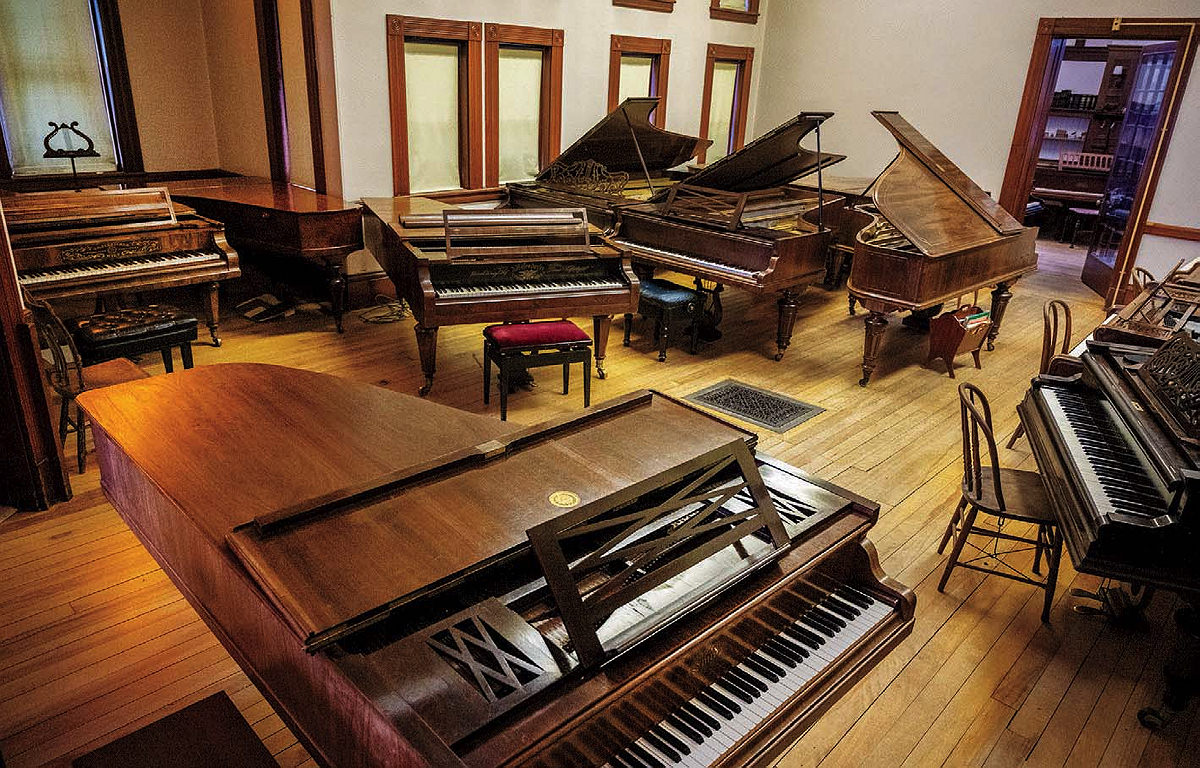
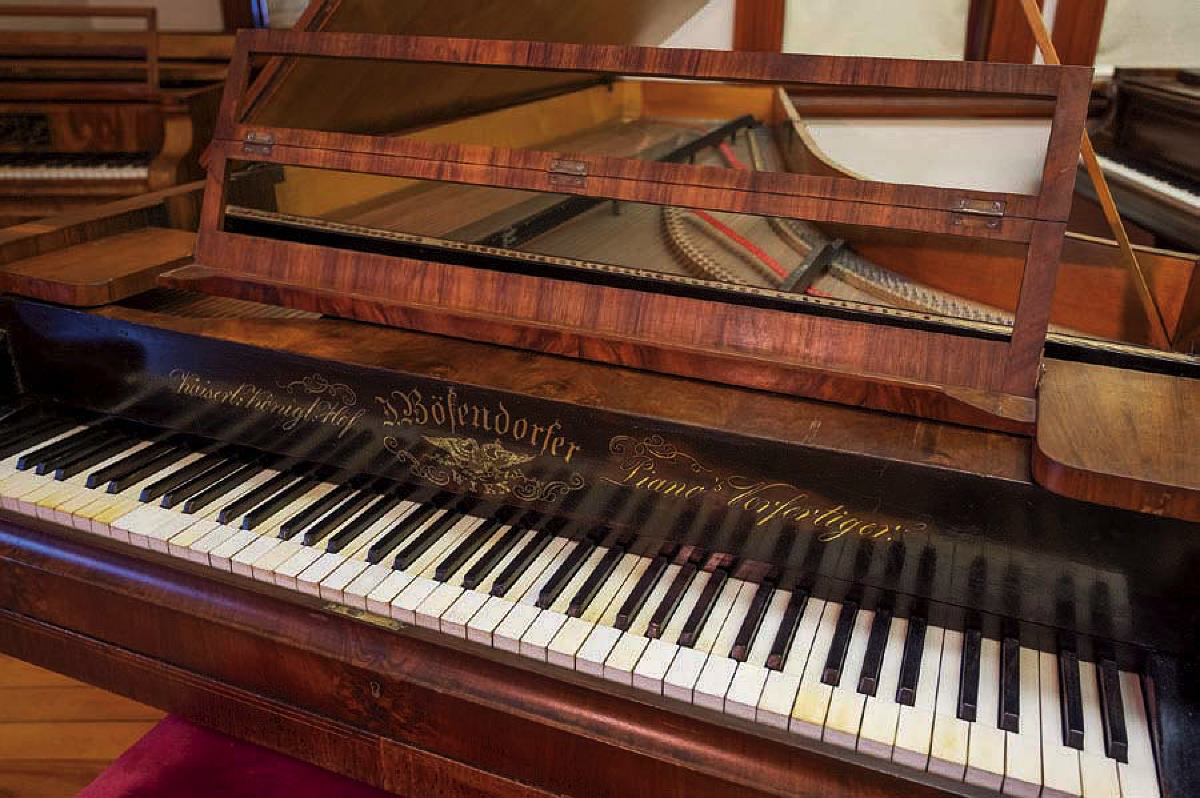
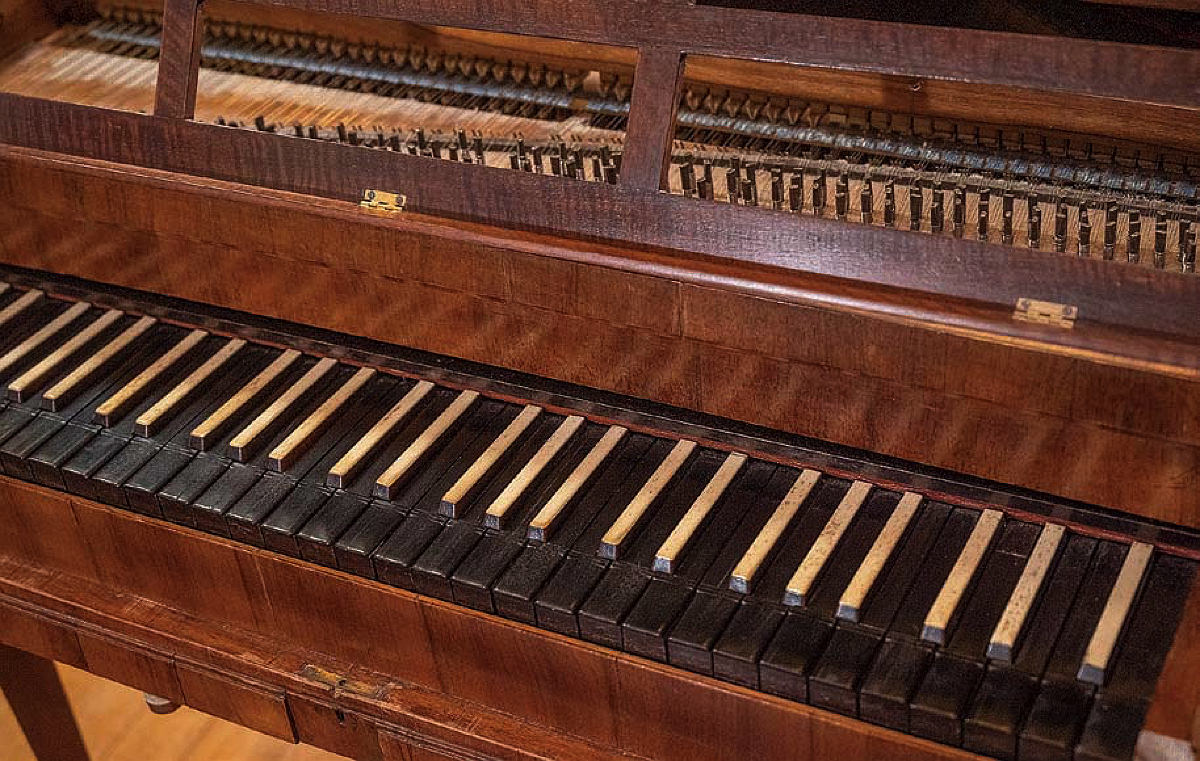
Pianos fill every room of a former library in Ashburnham, Massachusetts; among them is a Bösendorfer made in 1845 (middle), and a Viennese-style piano from the 1790s (bottom).Photographs by Jim Harrison
With some experimenting and advice from other restorers, Michael fixed the square piano. Patricia, a Boston University-trained music teacher, remembers hearing her husband play Haydn and Mozart on it, and then realizing how much heavier and thicker her Steinway sounded by comparison—“like elephants trying to dance en pointe.” A few years later, in 1975, the couple bought their first grand piano, an 1830 Stodart made in London. The Fredericks paid $2,000, plus another $1,000 in shipping, and when it arrived, it needed serious repair: ribs loose under the soundboard and keys clattering against the wood underneath. The original strings had been replaced with stiff modern wire, which gave off unpleasant overtones, and the hammers had been re-covered in the wrong material (felt instead of soft leather). Michael set to work. “And then, as they say,” he says, “it was one thing after another after another.” A single piano became several, and then a dozen, and then more.
The obsession became a career. The couple founded the nonprofit and opened their collection to the public because, Patricia says, “We thought, ‘This is something other people need to know about.’ We almost felt like we didn’t have a right to keep it to ourselves.” For years, the pianos were packed into their five-room home in Ashburnham, along with the Fredericks and their two children (they kept a diagram of how everything fit); in 2001, they began renting the former library. (Now in their late 70s, the couple hopes to see the collection kept intact and adopted by another nonprofit when they retire.)
It can take Michael years to restore a single piano, researching period parts, twisting screws and fiddling with wires, tuning it and then tuning it again, listening for the tiniest changes. Asked about the how-tos of restoration, he answers simply, “Learn to do as little as possible.” In many cases, the worst damage turns out to be from someone else’s botched repairs. “Attacked by a vicious restorer,” is a common refrain for Michael—so is his admonishment about the disastrous effects of overheated New England houses. “The amount that wood can shrink, it’s not something you measure with a fancy scientific instrument; you can use a yardstick.” The Fredericks set the thermostat at 55 degrees all winter, to keep the humidity high.
During tours, the Fredericks move from one piano to another, interweaving didactics with fragments from Chopin or Schubert or Czerny. Michael explains that the evolution of the piano wasn’t a simple straight line; it was a jumble of traditions—national, local—all advancing simultaneously. During the early nineteenth century, most prominent composers and pianists used Viennese and French pianos, which tended to have singing trebles, a clarity of sound, and a wide range of tone colors.
Modern-day pianos—usually Steinways—are heavier, in both sound and operation, with less contrast between loud and soft, between one melodic voice and another. “Everything smoothed out,” Patricia says. “Metallic-sounding,” adds Michael. But more than that: they all sound the same. These days, both pianos and piano performing have become standardized. A handful of makers dominate concert halls, and audiences expect the music to sound exactly like the recordings they have already heard. Something profound is lost, Michael believes.
In a small way, he and his wife are aiming to restore it. “We’re trying to preserve ecological diversity in classical piano playing,” he says. Toward the end of a tour last winter, Michael sat down at a piano that Beethoven would have known: a Viennese Brodmann, from 1800-1805. After some discussion of dampers and short sustaining strings, he began the opening movement of the “Moonlight” sonata. As his fingers floated across the keys, the sound was gentle, almost spectral, bass notes hanging in the air like a faraway call, harmonies blending into one another. Like most pianos of its time, this one was made for smaller rooms, not unlike the one where it was sitting now, and the sound was intimate. Michael played another few bars and then looked up, smiling faintly. “See,” he said, “can you hear that?”
